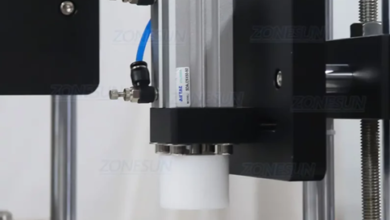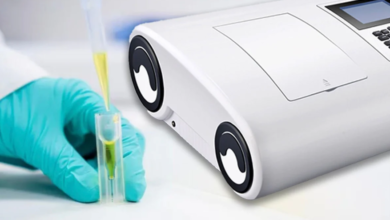
Advantages and Design Insights of Steel and Aluminum as Lithium Battery Cases
When purchasing power tools, laptops, or electric vehicles, people often focus on battery capacity and endurance, but rarely consider a critical factor—the battery casing material. It not only determines battery weight but also directly affects heat dissipation, lifespan, and safety. In recent years, more and more batteries have shifted from steel casings to aluminum casings. This change is not only due to material advantages but also closely related to processing technology and the practical needs of different application scenarios.
Steel-cased lithium batteries were the early mainstream, especially 18650 cylindrical cells, which are standard-size cylindrical lithium-ion batteries, 18mm in diameter and 65mm in height, widely used in power tools, energy storage devices, and some consumer electronics. The main advantage of steel casings is stability and reliability. They have strong impact resistance and are unlikely to rupture even when internal gases expand. Their sealing performance is excellent, and the risk of electrolyte leakage is low. In addition, steel is inexpensive, and processing methods such as stamping and welding are mature, making production costs controllable. This explains why steel-cased batteries have long dominated industrial applications.
Take a daily-life example: a construction worker using a power drill may hold a steel-cased battery that is heavier than aluminum, but it remains stable and reliable in a bumpy working environment, allowing the tool to complete tasks smoothly. This sense of security was difficult for early aluminum casings to provide. Similarly, in home or commercial energy storage systems, steel-cased batteries can maintain structural integrity over thousands of charge-discharge cycles, providing stable and reliable power for equipment.
In contrast, aluminum-cased lithium batteries have rapidly risen in consumer electronics and electric vehicles. Aluminum casings are not only lightweight but also excel in thermal management (controlling battery temperature to maintain performance and extend lifespan) and design flexibility. Aluminum has only one-third the density of steel, allowing a single battery to be 40%–60% lighter, which is critical for EV range, laptop portability, or compact energy storage devices (such as outdoor mobile power banks and emergency power supplies).
Thermal management is another key advantage. Aluminum’s high thermal conductivity allows rapid heat dissipation during high-power charge and discharge, reducing hotspots and extending battery life. In electric vehicles, large battery packs generate significant heat, and aluminum casings ensure stability during rapid acceleration or long-distance driving. In laptops or smartphones, even heat distribution improves user comfort and device durability.
Through custom CNC machining, aluminum casings can achieve precise dimensions and complex structural designs. CNC (Computer Numerical Control) machining is a process in which a computer controls tools to perform high-precision processing, allowing for intricate structures and strict dimensional requirements. Engineers can adjust casing thickness, internal partitions, and interface layouts according to requirements, enabling modular design (dividing the battery into combinable or replaceable modules for easier production, maintenance, and upgrades) and consistent small-batch production. For example, a manufacturer of electric vehicles used custom CNC machining to produce aluminum battery modules, reducing overall vehicle weight while optimizing thermal management. The batteries performed excellently under high-power testing and had extended lifespans.
See also: Quality Assurance in Custom Software: Zchwantech’s Best-Practice Approach
The advantages of aluminum-cased batteries are also evident in consumer electronics. Lightweight laptops and smartphones using aluminum casings become more portable while achieving uniform heat distribution, enhancing user experience. Portable energy storage devices benefit from aluminum’s light weight and corrosion resistance, making them easier to carry, safer, and longer-lasting. Each application scenario highlights aluminum’s advantages in design freedom and engineering flexibility.
To make the differences between steel and aluminum casings clearer, the following table compares several key indicators:
| Feature | Steel-Cased Battery | Aluminum-Cased Battery |
| Mechanical Strength | High | Medium |
| Weight | Heavy | Light (approx. 40–60% reduction) |
| Thermal Performance | Average | Excellent |
| Cost | Low, mature processing | Slightly higher, but precision ensured via custom CNC machining |
| Sealing | Excellent | Good, depends on processing precision |
| Processing | Stamping + Welding (stamping and welding are common metal forming methods used to shape battery casings) | Extrusion/Stretching + custom CNC machining |
| Typical Applications | Cylindrical batteries, power tools, energy storage | Rectangular batteries, consumer electronics, electric vehicles |
The table shows that steel emphasizes stability and safety, while aluminum focuses more on lightweight design and thermal performance. Different products and application scenarios naturally lead to different material choices.
The popularity of aluminum casings is not only due to material properties but also the development of processing technology. Modern custom CNC machining ensures high precision and batch consistency, giving engineers greater flexibility in optimizing battery modules. Whether for rapid prototyping or small-batch production, aluminum maintains high precision. Engineers can adjust casing thickness, shape, and internal structure to optimize energy density, heat dissipation pathways, and shock resistance. This precise control is difficult to achieve with steel casings, especially when reducing weight without compromising strength.
From a design perspective, aluminum casings are easier to integrate with other components. In EV battery packs, aluminum can include cooling channels or mounting points for sensors, cooling plates, or brackets. In laptops and smartphones, thin aluminum casings can be combined with protective foam or thermal pads to improve durability and thermal management. Portable energy storage devices can be designed with modular or snap-fit casings, simplifying assembly and maintenance. All of these benefits stem from aluminum’s processing flexibility.
Overall, steel and aluminum casings each have advantages. Steel is known for stability, durability, and cost-effectiveness, suitable for scenarios requiring high safety and long-term reliability. Aluminum excels in lightweight design, thermal management, and structural flexibility, and can achieve precise structures through custom CNC machining, making it ideal for high-performance or compact applications. Understanding these differences helps not only with engineering design and product selection but also allows users to appreciate the trade-offs behind battery performance. Today, aluminum casings, with their advantages in lightweight, thermal management, and precision machining, are gradually replacing steel as the mainstream, while steel still retains value in specific applications.




